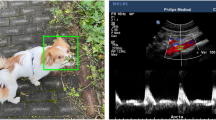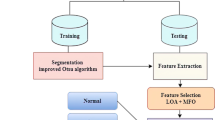Abstract
To evaluate the efficacy of atorvastatin in the treatment of diabetic nephropathy, contrast-enhanced ultrasound (CEUS) based on Poisson three-dimensional (3D) reconstruction algorithm was used. Poisson 3D reconstruction algorithm was optimized based on Gaussian filtering deep learning. Then, the running time, occupied space, and number of triangular blocks of Poisson 3D reconstruction algorithm before and after optimization were analyzed and compared through simulation experiments. One hundred and fifty-six DN patients were divided into an experimental group (conventional treatment + atorvastatin) and a control group (conventional treatment). Ultrasound examinations were performed on all patients before and after treatment, and the artificial intelligence (AI) “Doctor You” system was adopted for image transmission and diagnosis. The kidney volume (V) and hemodynamic parameters, including the maximal kidney volume (Vmax), minimal kidney volume (Vmin), and resistance index of all patients were detected and recorded before and after the treatment. The end-point events of patients were tracked. The results showed that the running time of the optimized Poisson 3D reconstruction algorithm was notably shorter, and it occupied more space compared with the pre-optimized Poisson 3D reconstruction algorithm, and the difference was remarkable (P < 0.05). The V (136.07 ± 22.16 cm3) in experimental group after the treatment was smaller in contrast to the control group (159.11 ± 31.79 cm3) (P < 0.05). The Vmax and Vmin of the renal artery in experimental group after treatment were obviously higher than those in control group, while the RI index of experimental group was relatively lower (P < 0.05). The 3D reconstructed image showed that the arterial blood flow was dendritic after treatment, the blood signal was abundant, and the distance among the peripheral blood vessels of the kidney and the renal capsule became small. In addition, the incidence of cerebral hemorrhage, transient cerebral ischemia, and new cerebral infarction in the experimental group was visibly lower than those in control group (P < 0.05). In short, the Poisson 3D reconstruction algorithm optimized by Gaussian filtering deep learning technology can not only guarantee the image quality, but also effectively shorten the running time of CEUS reconstruction. In addition, the atorvastatin could effectively improve the renal function of DN patients and could reduce the incidence of clinical cerebrovascular events, showing safe and feasible effect.










Similar content being viewed by others
Explore related subjects
Discover the latest articles and news from researchers in related subjects, suggested using machine learning.References
Mark PB, Winocour P, Day C (2017) Management of lipids in adults with diabetes mellitus and nephropathy and/or chronic kidney disease: summary of joint guidance from the Association of British Clinical Diabetologists (ABCD) and the Renal Association (RA). Br J Diabetes 17(2):64–72
Chen SK, Barbhaiya M, Fischer MA et al (2019) Lipid testing and statin prescriptions among medicaid recipients with systemic lupus erythematosus or diabetes mellitus and the general medicaid population. Arthritis Care Res 71(1):104–115
Al-Rasheed NM, Al-Rasheed NM, Bassiouni YA et al (2018) Simvastatin ameliorates diabetic nephropathy by attenuating oxidative stress and apoptosis in a rat model of streptozotocin-induced type 1 diabetes. Biomed Pharmacother 105:290–298
Abbasalizadeh F, Saleh P, Dousti R et al (2017) Effects of atorvastatin on proteinuria of type 2 diabetic nephropathy in patients with history of gestational diabetes mellitus: a clinical study. Nigerian Med J 58(2):63
Zhao H, Shu L, Huang W et al (2019) Difference analysis of related factors in macrovascular and microvascular complications in chinese patients with type 2 diabetes mellitus: a case-control study protocol. Diabetes Metab Syndrome Obes Targets Therapy 12:2193
Sharma D, Bhattacharya P, Kalia K et al (2017) Diabetic nephropathy: new insights into established therapeutic paradigms and novel molecular targets. Diabetes Res Clin Pract 128:91–108
Barzi F, Miri R, Sadeghi R et al (2019) A randomized double blind placebo controlled trial examining the effects of pentoxifylline on contrast induced nephropathy reduction after percutaneous coronary intervention in high risk candidates. Iran J Pharm Res IJPR 18(2):1040
Luo J, Chen J, Sun Y et al (2019) Quantitative contrast-enhanced ultrasound of renal perfusion: a technology for the assessment of early diabetic nephropathy in cynomolgus macaques with type 2 diabetes mellitus. Abdominal Radiol 44(5):1850–1857
Liu DJ, Stock E, Broeckx BJ et al (2020) Weight-gain induced changes in renal perfusion assessed by contrast-enhanced ultrasound precede increases in urinary protein excretion suggestive of glomerular and tubular injury and normalize after weight-loss in dogs. PloS One 15(4):e0231662
Chen LL, Zhai JX, Kang J et al (2019) Utility of contrast-enhanced ultrasound for the assessment of skeletal muscle perfusion in diabetes mellitus: a meta-analysis. Med Sci Monit Int Med J Exp Clin Res 25:4535
Liu DJ, Hesta M, Stock E et al (2019) Renal perfusion parameters measured by contrast-enhanced ultrasound in healthy dogs demonstrate a wide range of variability in the long-term. Vet Radiol Ultrasound 60(2):201–209
Soran H, Liu Y, Adam S et al (2018) A comparison of the effects of low-and high-dose atorvastatin on lipoprotein metabolism and inflammatory cytokines in type 2 diabetes: results from the protection against nephropathy in diabetes with atorvastatin (PANDA) randomized trial. J Clin Lipidol 12(1):44–55
Briasoulis A, Pala M, Telila T et al (2017) Statins and contrast-induced nephropathy: a systematic review and meta-analysis. Curr Pharm Des 23(46):7141–7148
Shen X, Zhang Z, Zhang X et al (2016) Efficacy of statins in patients with diabetic nephropathy: a meta-analysis of randomized controlled trials. Lipids Health Dis 15(1):179
Al-Rasheed NM, Al-Rasheed NM, Bassiouni YA et al (2018) Simvastatin ameliorates diabetic nephropathy by attenuating oxidative stress and apoptosis in a rat model of streptozotocin-induced type 1 diabetes. Biomed Pharmacother 105:290–298
Hussein MM, Mahfouz MK (2016) Effect of resveratrol and rosuvastatin on experimental diabetic nephropathy in rats. Biomed Pharmacother 82:685–692
Sarmadi H, Muñoz-Salinas R, Berbís MÁ et al (2019) 3D Reconstruction and alignment by consumer RGB-D sensors and fiducial planar markers for patient positioning in radiation therapy. Comput Methods Prog Biomed 180:105004
Bhaduaria D, Kaul A, Lal H et al (2019) Acute cortical necrosis in pregnancy still an important cause for end-stage renal disease in developing countries. Saudi J Kidney Dis Transpl 30(2):325
Sweeney MR, Gable CW, Karra S et al (2020) Upscaled discrete fracture matrix model (UDFM): an octree-refined continuum representation of fractured porous media. Comput Geosci 24(1):293–310
Muzahid AAM, Wan W, Sohel F et al (2020) 3D Object classification using a volumetric deep neural network: an efficient octree guided auxiliary learning approach. IEEE Access 8:23802–23816
Li X, Zhao H, Chen Z et al (2020) Identification of distributed dynamic excitation based on Taylor polynomial iteration and cubic Catmull–Rom spline interpolation. Inverse Probl. Sci. Eng. 28(2):220–237
Vuong QH, Ho MT, Vuong TT et al (2019) Artificial intelligence vs. natural stupidity: evaluating AI readiness for the vietnamese medical information system. J. Clin. Med. 8(2):168
Gong B, Nugent JP, Guest W et al (2019) Influence of artificial intelligence on Canadian medical students’ preference for radiology specialty: a national survey study. Acad Radiol 26(4):566–577
Lavoz C, Rodrigues-Diez RR, Plaza A et al (2020) VEGFR2 blockade improves renal damage in an experimental model of type 2 diabetic nephropathy. J Clin Med 9(2):302
Di Vincenzo A, Tana C, El Hadi H et al (2019) Antioxidant, anti-inflammatory, and metabolic properties of tocopherols and tocotrienols: clinical implications for vitamin E supplementation in diabetic kidney disease. Int J Mol Sci 20(20):5101
Chen MF, Liou SS, Hong TY et al (2019) Gigantol has protective effects against high glucose-evoked nephrotoxicity in mouse glomerulus mesangial cells by suppressing ROS/MAPK/NF-κB signaling pathways. Molecules 24(1):80
Mohammed ZF, Abdulla AA (2020) Thresholding-based white blood cells segmentation from microscopic blood images. UHD J Sci Technol 4(1):9
Mohammed ZF, Abdulla AA (2020) An efficient CAD system for ALL cell identification from microscopic blood images. Multimed Tools Appl 6S3:1–14
Davenport MS, Perazella MA, Yee J et al (2020) Use of intravenous iodinated contrast media in patients with kidney disease: consensus statements from the American College of Radiology and the National Kidney Foundation. Radiology 294(3):660–668
Kim DW, Jang HY, Kim KW et al (2019) Design characteristics of studies reporting the performance of artificial intelligence algorithms for diagnostic analysis of medical images: results from recently published papers. Korean J Radiol 20(3):405–410
Wang M, Sui J, Wang S et al (2019) Correlations of carotid intima-media thickness with endothelial function and atherosclerosis degree in patients with type 2 diabetes mellitus. Clin Hemorheol Microcirc 72(4):431–439
Lam A, Perchyonok Y, Ranatunga D et al (2020) Accuracy of non-contrast quiescent-interval single-shot and quiescent-interval single-shot arterial spin-labelled magnetic resonance angiography in assessment of peripheral arterial disease in a diabetic population. J Med Imaging Radiat Oncol 64(1):35–43
Langlotz CP, Allen B, Erickson BJ et al (2019) A roadmap for foundational research on artificial intelligence in medical imaging: from the 2018 NIH/RSNA/ACR/The Academy Workshop. Radiology 291(3):781–791
Shahrouki P, Moriarty JM, Khan SN et al (2019) High resolution, 3-dimensional Ferumoxytol-enhanced cardiovascular magnetic resonance venography in central venous occlusion. J Cardiovasc Magn Reson 21(1):17
Prevedello LM, Halabi SS, Shih G et al (2019) Challenges related to artificial intelligence research in medical imaging and the importance of image analysis competitions. Radiol Artif Intell 1(1):180031
Author information
Authors and Affiliations
Corresponding author
Additional information
Publisher's Note
Springer Nature remains neutral with regard to jurisdictional claims in published maps and institutional affiliations.
Rights and permissions
About this article
Cite this article
Sun, X., Lu, Q. Contrast-enhanced ultrasound in optimization of treatment plans for diabetic nephropathy patients based on deep learning. J Supercomput 78, 3539–3560 (2022). https://doi.org/10.1007/s11227-021-04002-0
Accepted:
Published:
Issue Date:
DOI: https://doi.org/10.1007/s11227-021-04002-0




